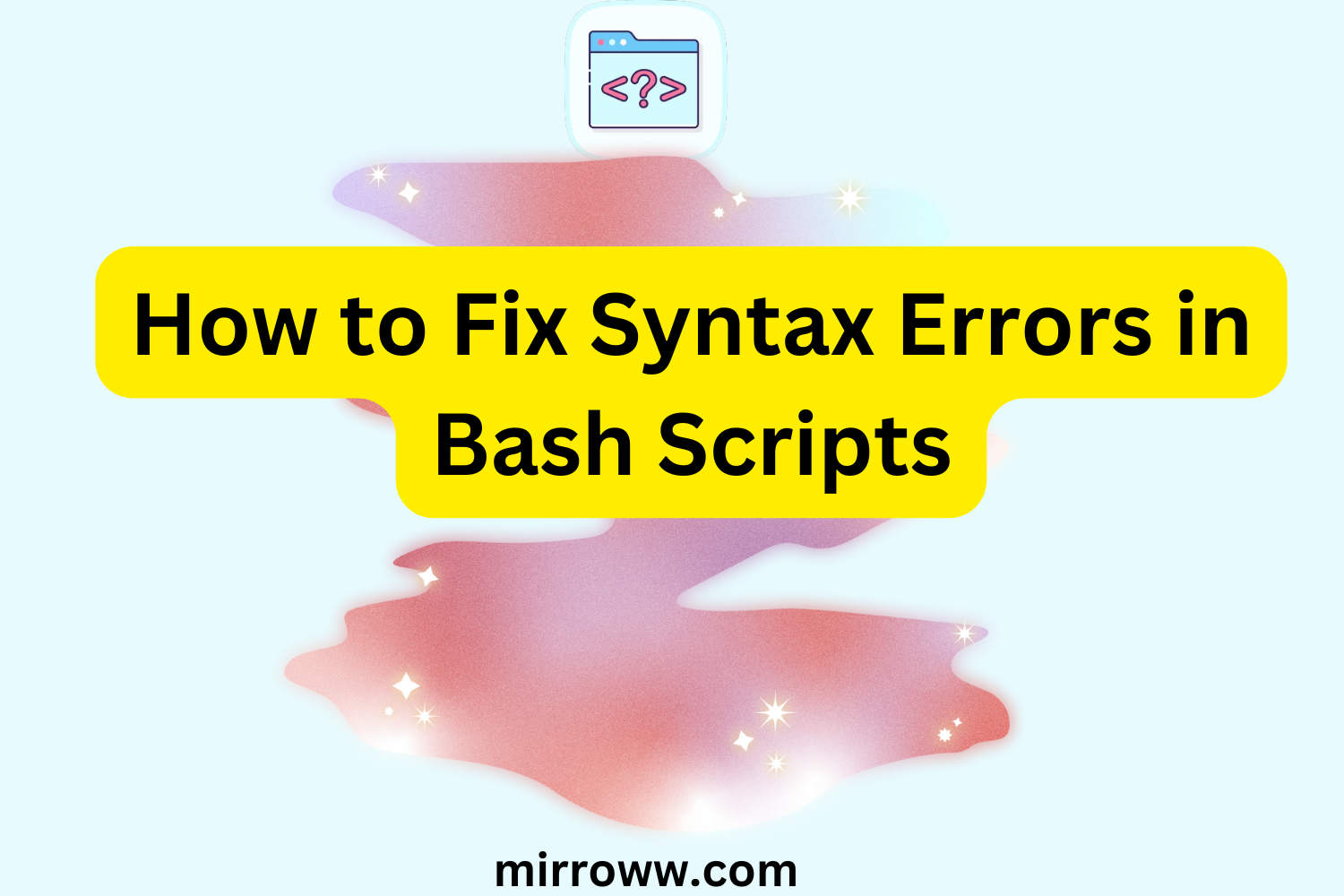Bash scripting can feel like magic — until it’s not. One tiny syntax error, and suddenly, your script crashes harder than your laptop’s battery at 1%. The dreaded “syntax error” can leave even seasoned developers scratching their heads. But fear not! This guide will show you how to troubleshoot and fix common Bash scripting syntax errors like a pro.
Understanding Syntax Errors
Let’s start with the basics: what exactly is a syntax error? Simply put, it’s a mistake in the way your script is written that prevents Bash from understanding your commands. Think of it like trying to read a book with random gibberish mixed in. Syntax errors are typically flagged when you attempt to execute the script, with error messages like:
syntax error near unexpected token 'fi'
Or the infamous:
command not found
Decoding these cryptic messages is the first step to fixing the problem.
Common Causes of Syntax Errors (And How to Fix Them)
1. Missing or Mismatched Quotes
Using quotes properly is critical in Bash scripting. Mismatched or missing quotes can confuse the interpreter.
Example:
echo "Hello World
This will throw an error because the closing double quote is missing.
Fix:
Always close your quotes properly:
echo "Hello World"
Also, be mindful of the type of quotes you use. Double quotes (“) allow variable expansion, while single quotes (‘) do not.
2. Forgetting to Close Loops or Conditionals
Bash loves structure. If you forget to close a loop or conditional, Bash will throw a tantrum (a.k.a. an error).
Example:
if [ "$USER" == "root" ]
echo "You are the root user"
Here, the if statement is not properly terminated with fi.
Fix:
if [ "$USER" == "root" ]; then
echo "You are the root user"
fi
Always use fi to close if blocks and done to close loops.
3. Misusing Command Syntax
Bash commands often have specific syntax requirements. A missing semicolon or an unexpected token can throw off the interpreter.
Example:
for i in {1..5}
echo $i
This will fail because the loop body is not properly delineated.
Fix:
for i in {1..5}; do
echo $i
done
4. Improper File Permissions
Sometimes, it’s not your code — it’s your file permissions.
Example:
./myscript.sh
If the script isn’t executable, you’ll get a “permission denied” error.
Fix:
Make the script executable:
chmod +x myscript.sh
./myscript.sh
5. Incorrect Shebang Line
The shebang (#!) tells the system what interpreter to use. A typo or missing shebang can lead to errors.
Example:
# !/bin/bash
Notice the space after #.
Fix:
#!/bin/bash
Ensure the shebang is at the very top of your script with no spaces.
Debugging Syntax Errors
When in doubt, debug. Bash offers several tools and techniques to help you identify and resolve syntax issues.
Enable Debugging Mode
Run your script with the -x flag to see each command as it’s executed:
bash -x myscript.sh
This will output a detailed trace, helping you pinpoint where the error occurs.
Use ShellCheck
ShellCheck is a lifesaver. It’s a linting tool that scans your script for potential issues and provides detailed suggestions for fixing them.
Installation:
sudo apt install shellcheck # For Debian-based systems
Usage:
shellcheck myscript.sh
Log Errors
Redirect error messages to a log file for easier analysis:
bash myscript.sh 2> error.log
Open error.log to review the errors.
Tips for Avoiding Syntax Errors
- Write in Small Chunks: Test your script in parts rather than writing everything at once.
- Use Indentation: Properly indent your code to improve readability and catch structural issues.
- Comment Your Code: Document your logic to make debugging easier.
- Test Regularly: Run your script often during development to catch errors early.
When All Else Fails…
If you’re stuck, don’t hesitate to seek help. Online communities like Stack Overflow or Linux forums are great resources. Just remember to provide as much detail as possible, including your code snippet and the error message.
Final Thoughts
Syntax errors can be frustrating, but they’re also opportunities to learn. Each error you fix makes you a better scripter and a more formidable Bash wizard. Remember, the key to mastering Bash is persistence and practice.
So, roll up your sleeves, debug that script, and get ready to watch it run flawlessly. And hey, when it finally does, don’t forget to celebrate. Maybe even with a victory echo:
echo "Hello, World! Script fixed!"
Have a syntax error horror story or a debugging tip to share? Drop it in the comments below!
Debugging Syntax Errors in R Programming: A Guide for Data Analysts

